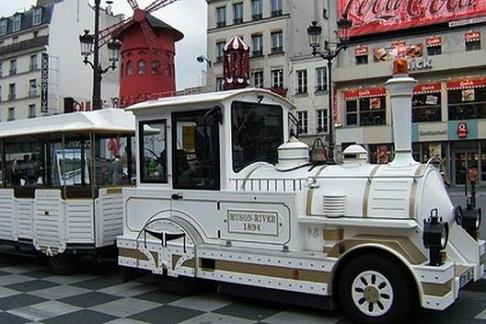Libre
Soutien

Bletchley Park, now a vibrant heritage attraction is the former top-secret home of the British and Allied Forces World War Two Codebreakers. Learn about the work of these men and women who it is estimated helped shorten the war by a full two years. Ticket Includes: Entry to Bletchley Park - instant ticket delivery, simply print and go Codebreaking huts - where Enigma messages were decrypted interactive activities & projected images World War I & 2 exhibitions interactive, modern Cyber Security exhibition historic buildings & mansion adult & family-friendly multimedia tours access to the beautiful grounds outdoor walking tours with a knowledgeable live guide National Radio Centre exhibition some temporary, seasonal exhibitions & performances Just a 40-minute drive from Bletchley Park, why not also visit the UK's largest Zoo, ZSL Whipsnade Zoo and use 365Tickets exclusive money-saving combo? With this deal the attractions can also be visited on separate days if preferred.
The State Rooms Buckingham Palace serves as both the office and London residence of Her Majesty The Queen, as well as the administrative headquarters of the Royal Household. It is one of the few working royal palaces remaining in the world today. Today the Buckingham Palace State Rooms are used extensively by Her Majesty The Queen and Members of the Royal Family to receive and entertain their guests on State, ceremonial and official occasions. During August and September when The Queen makes her annual visit to Scotland, the Palace's nineteen state rooms are open to visitors. What there is to see? The Buckingham Palace State Rooms form the heart of the working palace and are lavishly furnished with some of the greatest treasures from the Royal Collection - paintings by Rembrandt, Rubens, Poussin and Canaletto; sculpture by Canova; exquisite examples of Sèvres porcelain; and some of the finest English and French furniture. The Garden Described as a 'walled oasis in the middle of London', the Palace's garden is home to thirty different species of bird and more than 350 different wild flowers, some extremely rare. Visitors end their tour with a walk along the south side of the garden, with splendid views of the west front of the Palace and the famous lake. Multimedia Guide An multimedia guide is included in the ticket price and is available in English, French, German, Spanish, Italian, and Japanese, Russian and Mandarin. There is also a family multimedia guide (in English only) and accompanying activity trail, suitable for children 7-11 years. Changing of the Guard The Changing of the Guard ceremony takes place at 11:30 daily from April until the end of July and on alternate days for the rest of the year, weather permitting. The new guards arrive at the forecourt of the Palace at 11:30 from Wellington Barracks. The journey takes about 5 minutes and the soldiers are accompanied by a band. The ceremony is conducted on the Palace forecourt and takes approximately forty minutes to complete. [The Army have not yet released the schedule for July, August or September.] Wheelchair Access If you require wheelchair access or the use of the lift, you should not book with 365 Tickets.com and should pre-book tickets directly with Buckingham Palace.
What you can expect: On this 2-hour private tour of NYC Lights you and your group may choose to travel by a luxury limo or party bus. You may start or end your tour at a location of your choice in Manhattan. Travel pass world famous landmarks such as Rockefeller Center, Times Square, Herald Square, 5th Avenue and over the famous Brooklyn Bridge. Stop in DUMBO Brooklyn for a photo in front of the Brooklyn Bridge and Manhattan Skyline. During your return back to NYC, open a bottle of complimentary champagne while listening to your favorite music. What better way to see and experience NYC! Inclusions: Glass of Champagne Beverages Driver/Guide Transport by private vehicle Exclusions: Gratuities (HIGHLY RECOMMENDED)
Departs from Central Wharf in Boston New England Aquarium UNFORGETTABLE CRUISES Whale Watch Nobody offers more departures or gets you to the whales faster to watch them longer.The World Wildlife Fund named Massachusetts one of the top 10 whale-watching spots in the world, saying, “The "wow factor" here is huge, as minke, finback, and humpback whales regularly glide through the waters, and glimpses of them spouting and breaching are practically guaranteed.”
Explore the National Mall and experience the joy and freedom of riding the most unique vehicle created.
After learning how to ride your Segway, you’ll roll right up the center of Pennsylvania Avenue, glide to the monuments and memorials on the National Mall, and visit some fun off-the-mall spots along the way.
On this tour, you will see: US Capital Building, Library of Congress, Supreme Court, Smithsonian Castle and several Smithsonian museums, Washington Monument, WWII Memorial, Korean War Veterans Memorial, Vietnam Veterans Memorial, and the Lincoln Memorial, the White House and more.
Inclusions: Guided tour includes Segway, helmet, snack, and bottled water
NOT included: Gratuities
Participants must be 16 years or old. Weight minimum is 100lbs, maximum 260 lbs.
Choose 3, 4, 5 or 7 attractions from the following list: Sydney Attractions: Taronga Zoo Hop-On Hop-Off Big Bus Sydney and Bondi: 1-Day Classic Tour Sydney Jet - Thrill Ride The Sydney Opera House Tour WILD LIFE Sydney Zoo BlueBananas Electric Bike Tours: The Mini Banana - Bike the Bridge Tour Magistic Cruisemart 2-Hour Harbour Sightseeing Cruise Australian National Maritime Museum – Big Ticket Meal at Harbour Bar and Kitchen Blue Mountains Explorer Bus: Hop-On Hop-Off Tour Sydney with Conviction Walking Tour The Sydney Tower Eye with 4D Cinema Experience Eco Hopper 24-Hour Hop-On Hop-Off Pass SEA LIFE Sydney Aquarium Discover Bondi Coastal Walking Tour Café Mezze and Champagne Cruise by Magistic Madame Tussauds Sydney Bondi Surf: 2-Hour Surfboard & Wetsuit Rental Illawarra Fly Treetop Adventures Kings Cross Crime & Passion Walking Tour
